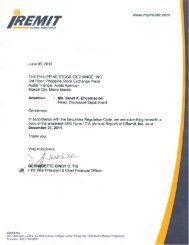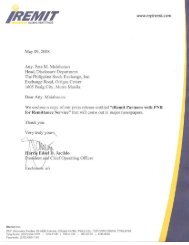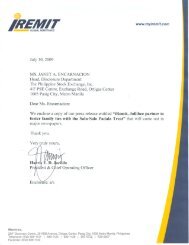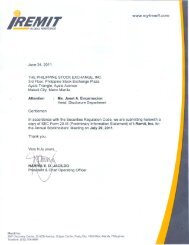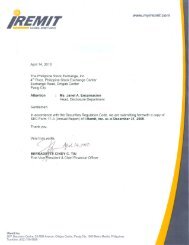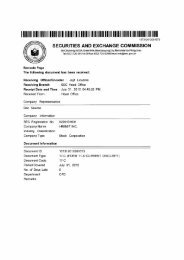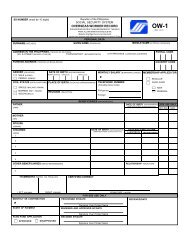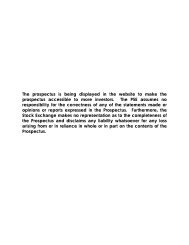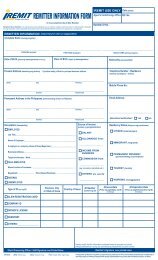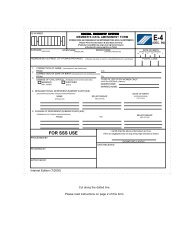SEC Form 20-IS - iRemit Global Remittance
SEC Form 20-IS - iRemit Global Remittance
SEC Form 20-IS - iRemit Global Remittance
You also want an ePaper? Increase the reach of your titles
YUMPU automatically turns print PDFs into web optimized ePapers that Google loves.
- 9 -<br />
assets or groups of assets, in which case the recoverable amount is assessed as part of the CGU to<br />
which it belongs. Where the carrying amount of an asset (or CGU) exceeds its recoverable<br />
amount, the asset (or CGU) is considered impaired and is written down to its recoverable amount.<br />
In assessing value in use, the estimated future cash flows are discounted to their present value<br />
using a pre-tax discount rate that reflects current market assessments of the time value of money<br />
and the risks specific to the asset (or CGU). In determining fair value less cost to sell, recent<br />
market transactions are taken into account, if available. If no such transactions can be identified,<br />
an appropriate valuation model is used. These calculations are corroborated by available fair<br />
value indicators.<br />
An impairment loss is charged to operations in the year in which it arises, unless the asset is<br />
carried at a revalued amount, in which case the impairment loss is charged to the revaluation<br />
increment of the said asset.<br />
An assessment is made at each balance sheet date as to whether there is any indication that<br />
previously recognized impairment losses may no longer exist or may have decreased. If such<br />
indication exists, the recoverable amount is estimated. A previously recognized impairment loss is<br />
reversed only if there has been a change in the estimates used to determine the asset’s recoverable<br />
amount since the last impairment loss was recognized. If that is the case, the carrying amount of<br />
the asset is increased to its recoverable amount. That increased amount cannot exceed the carrying<br />
amount that would have been determined, net of depreciation and amortization, had no impairment<br />
loss been recognized for the asset in prior years. Such reversal is recognized in the parent<br />
company statement of income unless the asset is carried at a revalued amount, in which case the<br />
reversal is treated as a revaluation increase. After such a reversal, the depreciation and<br />
amortization expense is adjusted in future years to allocate the asset’s revised carrying amount,<br />
less any residual value, on a systematic basis over its remaining life.<br />
Input Value Added Tax (VAT)<br />
Input VAT represents VAT imposed on the Parent Company by its suppliers for the acquisition of<br />
goods and services as required by Philippine taxation laws and regulations. This will be claimed<br />
as tax credits. Input VAT is stated at its estimated net realizable values.<br />
Revenue Recognition<br />
Revenue is recognized to the extent that it is probable that the economic benefits will flow to the<br />
Parent Company and the revenue can be reliably measured. The Parent Company assesses its<br />
revenue arrangements against specific criteria in order to determine if it is acting as principal or<br />
agent. The following specific recognition criteria must also be met before revenue is recognized:<br />
Delivery fees<br />
Revenue from delivery fees is recognized as the service is rendered net of amounts payable to<br />
principals (i.e., partner remittance companies) for fees billed on their behalf.<br />
Service revenue<br />
Service revenue is recognized when the service is rendered.<br />
Interest income<br />
Interest on financial instruments measured at amortized cost is recognized based on the EIR<br />
method.<br />
The EIR method is a method of calculating the amortized cost of a financial asset or a financial<br />
liability and allocating the interest income or interest expense over the relevant period. The EIR is<br />
the rate that exactly discounts estimated future cash payments or receipts throughout the expected<br />
*SGVMC116501*



